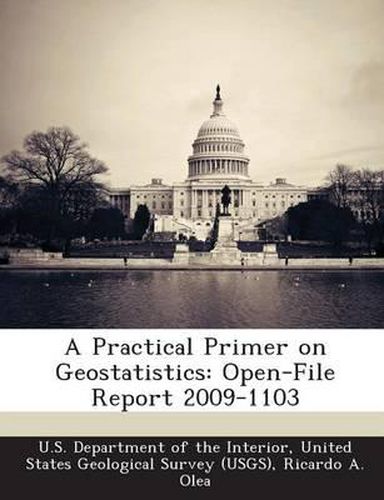Readings Newsletter
Become a Readings Member to make your shopping experience even easier.
Sign in or sign up for free!
You’re not far away from qualifying for FREE standard shipping within Australia
You’ve qualified for FREE standard shipping within Australia
The cart is loading…






THE CHALLENGE Most geological phenomena are extraordinarily complex in their interrelationships and vast in their geographical extension. Ordinarily, engineers and geoscientists are faced with corporate or scientific requirements to properly prepare geological models with measurements involving a small fraction of the entire area or volume of interest. Exact description of a system such as an oil reservoir is neither feasible nor economically possible. The results are necessarily uncertain. Note that the uncertainty is not an intrinsic property of the systems; it is the result of incomplete knowledge by the observer. THE AIM OF GEOSTATISTICS The main objective of geostatistics is the characterization of spatial systems that are incompletely known, systems that are common in geology. A key difference from classical statistics is that geostatistics uses the sampling location of every measurement. Unless the measurements show spatial correlation, the application of geostatistics is pointless. Ordinarily the need for additional knowledge goes beyond a few points, which explains the display of results graphically as fishnet plots, block diagrams, and maps. GEOSTATISTICAL METHODS Geostatistics is a collection of numerical techniques for the characterization of spatial attributes using primarily two tools: probabilistic models, which are used for spatial data in a manner similar to the way in which time-series analysis characterizes temporal data, or pattern recognition techniques. The probabilistic models are used as a way to handle uncertainty in results away from sampling locations, making a radical departure from alternative approaches like inverse distance estimation methods. DIFFERENCES WITH TIME SERIES On dealing with time-series analysis, users frequently concentrate their attention on extrapolations for making forecasts. Although users of geostatistics may be interested in extrapolation, the methods work at their best interpolating. This simple difference has sig
$9.00 standard shipping within Australia
FREE standard shipping within Australia for orders over $100.00
Express & International shipping calculated at checkout
THE CHALLENGE Most geological phenomena are extraordinarily complex in their interrelationships and vast in their geographical extension. Ordinarily, engineers and geoscientists are faced with corporate or scientific requirements to properly prepare geological models with measurements involving a small fraction of the entire area or volume of interest. Exact description of a system such as an oil reservoir is neither feasible nor economically possible. The results are necessarily uncertain. Note that the uncertainty is not an intrinsic property of the systems; it is the result of incomplete knowledge by the observer. THE AIM OF GEOSTATISTICS The main objective of geostatistics is the characterization of spatial systems that are incompletely known, systems that are common in geology. A key difference from classical statistics is that geostatistics uses the sampling location of every measurement. Unless the measurements show spatial correlation, the application of geostatistics is pointless. Ordinarily the need for additional knowledge goes beyond a few points, which explains the display of results graphically as fishnet plots, block diagrams, and maps. GEOSTATISTICAL METHODS Geostatistics is a collection of numerical techniques for the characterization of spatial attributes using primarily two tools: probabilistic models, which are used for spatial data in a manner similar to the way in which time-series analysis characterizes temporal data, or pattern recognition techniques. The probabilistic models are used as a way to handle uncertainty in results away from sampling locations, making a radical departure from alternative approaches like inverse distance estimation methods. DIFFERENCES WITH TIME SERIES On dealing with time-series analysis, users frequently concentrate their attention on extrapolations for making forecasts. Although users of geostatistics may be interested in extrapolation, the methods work at their best interpolating. This simple difference has sig